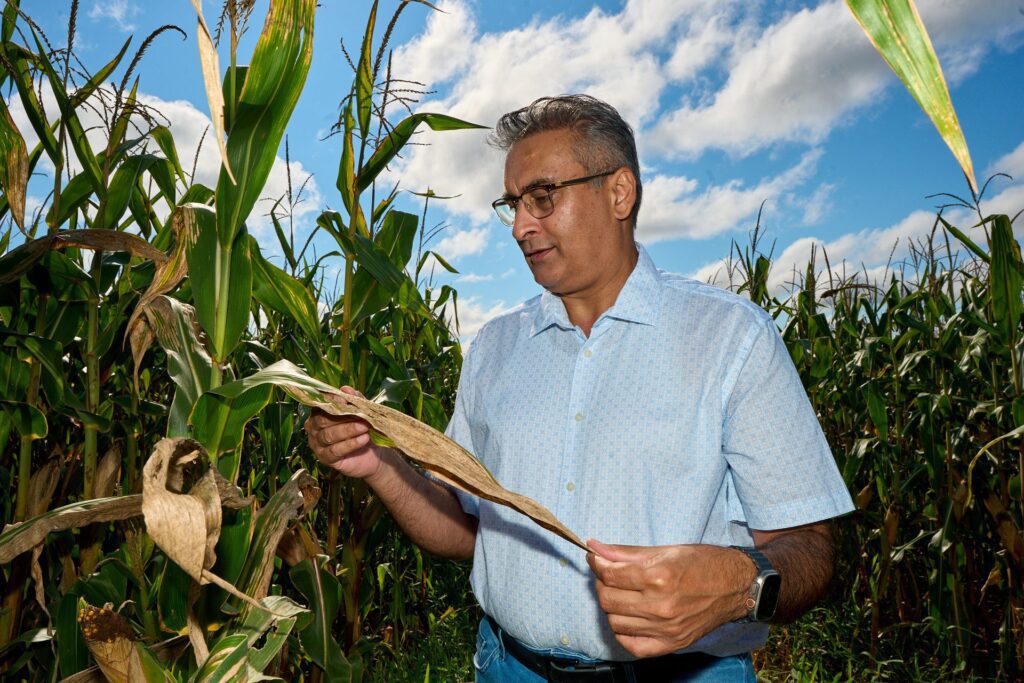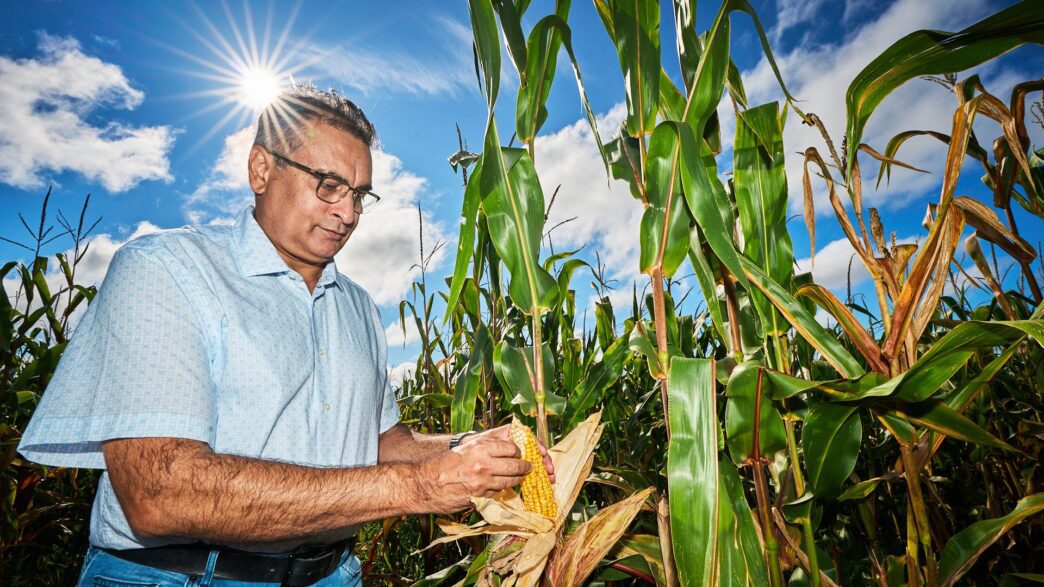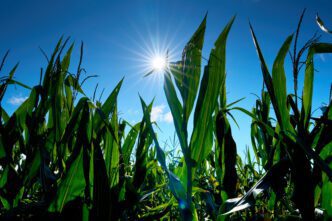When corn leaves fade from green to yellow, it’s not just for appearances.
Yellowing marks the moment a plant stops capturing sunlight, starts redirecting precious nitrogen to developing kernels and other organs and, if this shift happens too early, produces less grain.
New research into corn function and genes has the potential to dramatically impact future food security in a time of shrinking resources.
The study — led by Department of Genetics and Biochemistry Associate Professor Rajandeep Sekhon and recent Ph.D. graduate Manwinder Singh Brar — found that staygreen lines, which retain leaf greenness longer, amass antioxidant flavonoids that shield tissues from damage. Conversely, quick-yellowing lines pile up sugar alcohols and free amino acids that signal protein breakdown.
Disabling just two of the newly flagged flavonoid genes caused leaves in both maize and the model plant, Arabidopsis, to yellow faster, Brar said.
“These metabolite markers give breeders and biotech companies precise targets for creating crops with longer-lived leaves — plants that keep photosynthesizing, withstand heat and drought better, and promise higher, more reliable harvests in corn and other cereals like wheat, rice and sorghum,” Sekhon said.
Tracking diverse varieties of corn plants from flowering until they yellowed and died, scientists at Clemson University identified nearly 200 leaf metabolites, plant molecules that form “chemical fingerprint” of leaves, and more than 50 genes that drive metabolic changes as the plant ages.

Programmed aging process
Senescence is a natural, genetically programmed aging process that involves the decline of photosynthetic function and recycling of nutrients.
In trees, fall colors are a result of senescence.
“Trees are smart. Instead of letting their leaves just fall off, they systematically dismantle them. Before they kill them, they scavenge as many nutrients from those leaves as possible. They store that energy in the trunk or roots and use it to reproduce leaves the next spring, giving them an edge for the next spring when they are competing for light and other resources with their neighbors,” Sekhon said.
Food crop plants like corn, wheat and sorghum also kill their leaves. They’ll dismantle the proteins in the leaves and recycle nitrogen and other elements. Since they won’t live for another cycle, they’ll put all of that extra energy into seed.
“They’ll pack their seed because evolutionary speaking, that seed is the safety net for that species to sprout next year,” Sekhon said.
But some varieties of corn have the “staygreen” trait, which essentially is delayed leaf senescence. During this delay, the plants can continue to photosynthesize because the leaf is the organ that changes solar energy into chemical energy, mainly sugars, he said.
Staygreen varieties can fight stress better

Staygreen varieties also have more energy so they can fight abiotic (heat and drought, for example) and biotic (such as insects and pathogens) stress better.
Sekhon said there are positives to both natural senescence and delayed senescence.
In the Midwest, if plants don’t senesce early, they don’t dry early and there is still moisture in the seed when farmers try to harvest. In the south, however, the delayed senescence of staygreen can be helpful because of heat and drought.
“If we know the genes, we can really tailor plants for each environment, but we need to understand how this process works,” he said. “There has been a lot of research on this for the last 60-70 years, but we still don’t know a whole lot about senescence, especially in cereal crops like corn. We have barely scratched the surface.”
In this study, the researchers used metabolites as a phenotype.
Researchers looked for chemical compounds which separated staygreen varieties from those that were not staygreen.
Pinpointing the genes that drive senescence
Brar separated the varieties of corn into staygreen and non-staygreen and measured leaf “vitals” such as chlorophyll and photosynthesis and catalogued thousands of metabolites — the small molecules that translate genetic code into visible traits. Each metabolite provides a chemical snapshot of gene activity. Mapping their abundance alongside DNA variation provides a lens for pinpointing the genes that drive senescence, Sekhon said.
“If plants are efficiently senescing, the grain that they are producing is healthy and can survive the harsher weather and then it can generate better in the next cycle,” he said.
Brar said that yields could increase and help meet the food needs of the world’s ever-growing human population.
The research was partially supported by National Science Foundation grant OIA-1826715.
Detailed findings were published in the journal The Plant Cell in an article titled, “Temporal analysis of physiological phenotypes identifies novel metabolic and genetic underpinnings of senescence in maize.”








